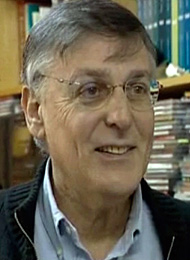
 The Nobel Prize winner in Chemistry of current year is an Israeli scientist, Daniel Shechtmen. He is awarded the Nobel Prize for the discovery of a material in which atoms were packed together in a well-defined pattern that never repeats.
The Nobel Prize winner in Chemistry of current year is an Israeli scientist, Daniel Shechtmen. He is awarded the Nobel Prize for the discovery of a material in which atoms were packed together in a well-defined pattern that never repeats.
Recently awarded Nobel prizes have generally split credit for scientific advances among two or three people, but this year’s chemistry prize and accompanying 10 million Swedish kronor ($1.4 million) went solely to Daniel Shechtman, 70, a professor of materials science at Technion-Israel Institute of Technology. The citation from the Royal Swedish Academy of Sciences states simply, “for the discovery of quasicrystals.”
Shechtman had made a discovery counter to the laws of nature in 1982. It was generally believed at that time that all solid matter, atoms were packed inside crystals in symmetrical patterns that were repeated periodically over and over again. For scientists, this repetition was required in order to obtain a crystal. But the Shechtman’s image obtained through an electron microscope while studying a metal mix of aluminum and manganese, showed that the atoms in his crystal were packed in a pattern that could not be repeated. Such a pattern was considered just as impossible as creating a football using only six-cornered polygons, when a sphere needs both five- and six-cornered polygons. His discovery was extremely controversial and in the course of defending his findings, he was asked to leave his research group. However, his battle eventually forced scientists to reconsider their conception of the very nature of matter.
However, such regular but non-repeating patterns, defined by precise rules, have already been known in mathematics since ancient times and are found in mosaics of medieval Islamic tiles, but it was considered impossible in the packing of atoms. Quasicrystals have since been found in many other materials, including a naturally occurring mineral from a Russian river.
Last year, the Nobel Prize in chemistry was awarded to Richard Heck of the University of Delaware, Ei-ichi Negishi of Purdue University, and Akira Suzuki of Hokkaido University in Japan, who came up with efficient ways to link carbon atoms together.
Article viewed on Oye! Times at www.oyetimes.com

Be the first to comment